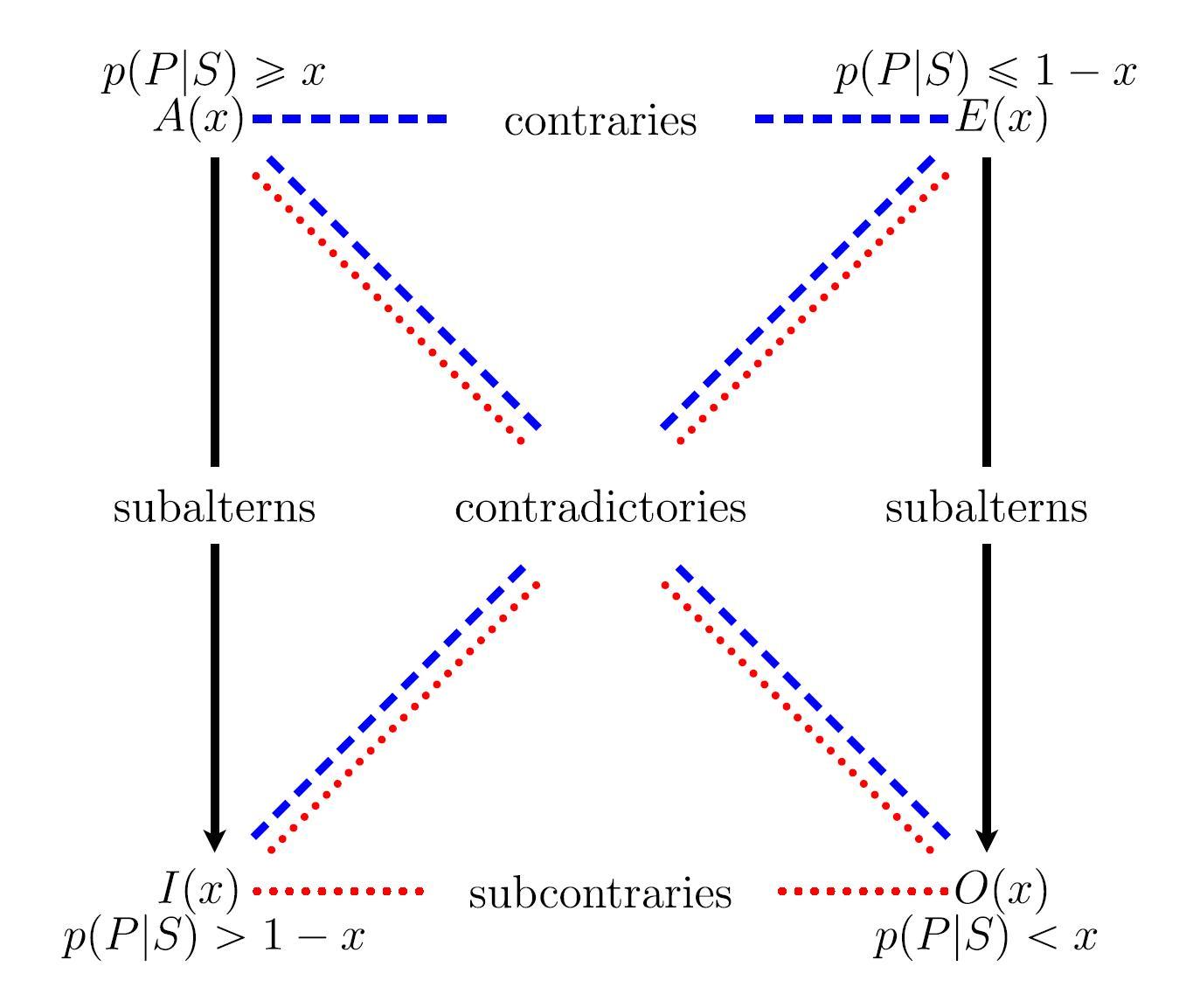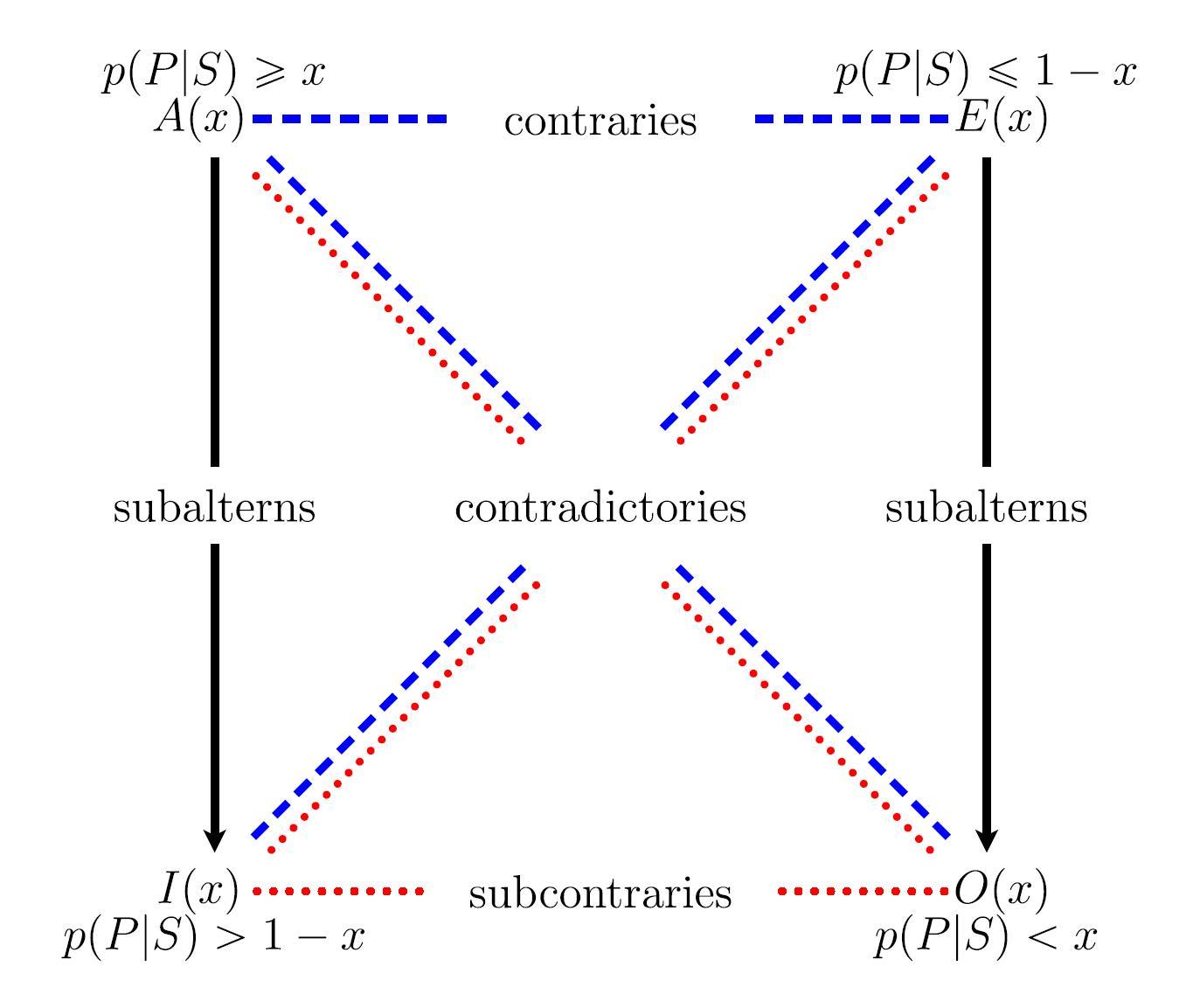
Probabilistic squares and hexagons of opposition under coherence (2017), p. 288
by Pfeifer, Niki; Sanfilippo, Giuseppe

Copyright according to our policy
Caption
- Probabilistic square of opposition $\mathbf{S}(x)$ involving generalized quantifiers defined on the four sentence types ($A(x), E(x), I(x), O(x)$) with the threshold $x \in \, ]\frac{1}{2}, 1]$ (see also Table 1). In the extreme case where $x =1$, we obtain a new interpretation of the traditional square of opposition (see also Fig. 1), where the corners are labelled by "Every S is P" (A), "No S is P" (E), "Some S is P" (I), and "Some S is not P" (O).
- Aristotelian family
- Classical Sigma-2
- Boolean complexity
- 3
- Number of labels per vertex (at most)
- 2
- Equivalence between (some) labels of the same vertex
- No
- Analogy between (some) labels of the same vertex
- No
- Uniqueness of the vertices up to logical equivalence
- Yes
- Errors in the diagram
- No
- Shape
- Square (regular)
- Colinearity range
- 0
- Coplanarity range
- 0
- Cospatiality range
- 0
- Representation of contradiction
- By central symmetry
Logic
Geometry
- Conceptual info
- No
- Mnemonic support (AEIO, purpurea ...)
- Yes
- Form
- none
- Label type
- symbolic
- Symbolic field
- mathematics ,
- logic
- Contains partial formulas or symbols
- Yes
- Logical system
- syllogistics
- Mathematical branch
- probability theory
Vertex description
Edge description
- Diagram is colored
- Yes
- Diagram is embellished
- No